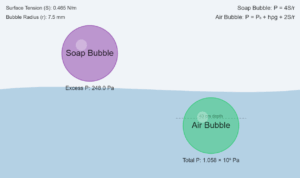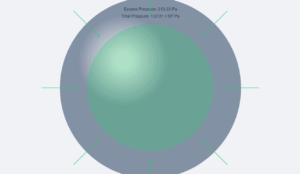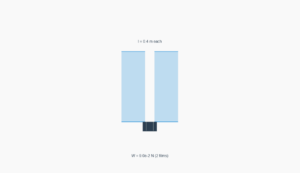Syringe Hydraulic System
Interactive demonstration of Pascal's Principle using syringes
Example
Question:
Two syringes of different cross-sections (without needles) filled with water are connected with a tightly fitted rubber tube filled with water. Diameters of the smaller piston and larger piston are 1.0 cm and 3.0 cm respectively.
(a) Find the force exerted on the larger piston when a force of 10 N is applied to the smaller piston.
(b) If the smaller piston is pushed in through 6.0 cm, how much does the larger piston move out?
Solution:
(a) Since pressure is transmitted undiminished throughout the fluid:
\[
F_2 = \frac{A_2}{A_1} F_1 = \frac{\pi (3/2 \times 10^{-2}\,\mathrm{m})^2}{\pi (1/2 \times 10^{-2}\,\mathrm{m})^2} \cdot 10\,\mathrm{N} = 90\,\mathrm{N}
\]
(b) Water is considered to be perfectly incompressible. Volume covered by the movement of the smaller piston inwards is equal to volume moved outwards due to the larger piston.
\[
L_1 A_1 = L_2 A_2
\]
\[
L_2 = \frac{A_1}{A_2} L_1 = \frac{\pi (1/2 \times 10^{-2}\,\mathrm{m})^2}{\pi (3/2 \times 10^{-2}\,\mathrm{m})^2} \times 6 \times 10^{-2}\,\mathrm{m} \approx 0.67 \times 10^{-2}\,\mathrm{m} = 0.67\,\mathrm{cm}
\]
Note: Atmospheric pressure is common to both pistons and has been ignored.
Real-time Calculations
Pascal's Principle & Physics
Pascal's Principle states that pressure applied to a confined fluid is transmitted equally in all directions. This allows hydraulic systems to multiply force: a small force on a small area creates the same pressure as a large force on a large area.



